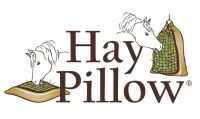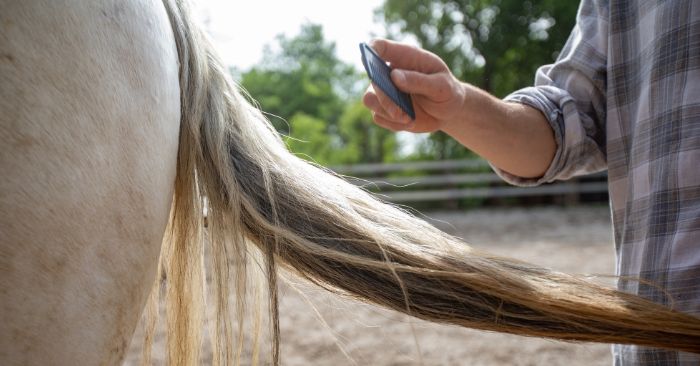Horse Tail Wraps, Braids & Bags – Potential Risks
Read on to learn why your horse's tail is more than an ornament and how keeping it healthy and natural provides benefits and prevents injury.

The horse’s tail serves many purposes:
- Indicator of emotional status
- Assists in temperature regulation
- Protective barrier for the anus and vulva
- An appendage that aids in balancing
- Insect deterrent
Horse Tail Anatomy
- There are between 18 and 22 tail vertebrae, which begin where the sacrum ends.
- Muscle and ligament continue to the end of the dock.
- The vertebrae size reduces in diameter from the root of the tail to the tip. The end is pointed.
- Two arteries supply blood to the tail. Circulation is not efficient in this narrow pathway.
Potential Risks from Braiding, Wrapping & Tail Bags
Promoting a Naturally Healthy Tail
Nutrition
Although genetics play a large role in tail thickness and length, diet is key. Tail bags and braids cannot compensate for brittle unhealthy tail hairs. Deficiencies or imbalances of nutrients, such as protein, fat, minerals and vitamins, impact your horse's skin, hair and hooves. Proper nutrition promotes optimum keratin production and healthy vibrant hair strands that don’t break off.
Hygiene
Routinely groom/comb to remove debris (burs and pieces of foliage) and dead hair that can cause matting. Start at the bottom of the tail and work your way up with a wide rounded tooth comb.
Bathe the dock and tail hairs with a mild shampoo to remove mud and help to prevent conditions of the skin underneath. Let the tail dry completely prior to combing.
Keep the tail docked if necessary (a few inches off the ground) to prevent your horse from stepping on it.
All Things Considered
Helpful How To Resources
- Can Horses Eat More Hay Without Weight Gain? The Surprising Factors
- Sand Colic - The Surprising (Simple) Cure & Prevention
- Grass Hay vs Pellets, Cubes & Chopped Hay – Pros & Cons
- 6 Great Reasons to Feed Your Horse from Ground Level
- 9 Benefits of Slow Feeding Horses
- 7 Slow Feed Dos and Dont's for Horses
- 7 Easy Ways to Help Prevent Colic
- Ulcers? Learn How Forage Buffers Acid
- Causes of Equine Ulcers – 7 Stress Factors & Solutions
- Never Exercise Horses on an Empty Stomach...Ever
- Why You Shouldn't Transport Horses On An Empty Stomach




